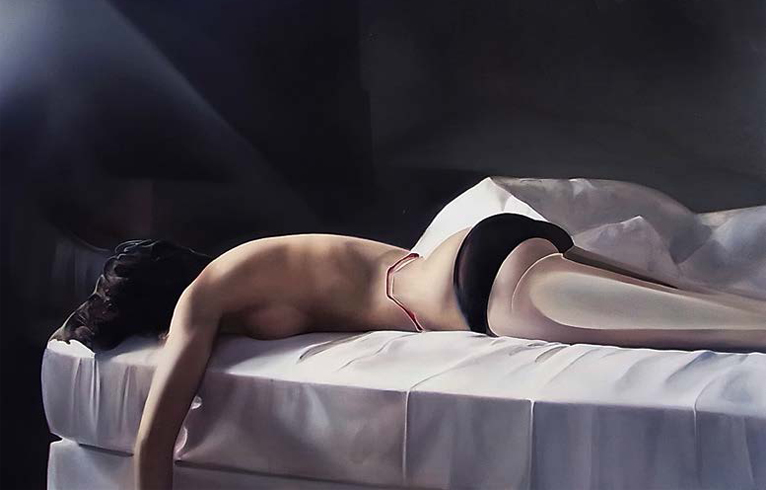SONG KUN: A THOUSAND KISSES DEEP
| October 26, 2012 | Post In LEAP 16

From 2008 onward, Song Kun began building a new internal reality, related to life but existing through images. This “realism” is alive in the world of her works. In contrast to real life, she weeds out the underbrush and preserves only what is real and essential, allowing the images to emerge transcendent and clear. Her obsession with constructing this idealist’s utopia is unrelenting and all-consuming, as the painting’s surface becomes an escape from reality.
After a few years, the narration of this utopia began to change, and with this group of works, Song Kun broadens her scope. While her previous task was “refining” reality, she now distances herself slightly from the freshness of the everyday, and no longer strives to present life’s fruits directly or diaristically. She has begun to move beyond appearance, exploring the meaning and desire she observes just below the bright, shiny surface.
Forming a lifetime alliance with a mate, giving birth to new life— these are all things we want. Like longings of the flesh, they are inherent: testaments to our passion for life and our drive to live it. During adolescence, desire is instinct itself. But while one can easily perceive the pulse of desire, it is not so easy to convey this through art. Similarly, different personalities intuit desire in different ways. As an individual, Song Kun is extremely sensitive to emotion. Hers is a sensitivity fostered by a high-level understanding of her own body and its femininity. Such sensitivity begets more direct, unhindered expression: the true colors of Song’s work. The exhibition space has been arranged in museum format, where the dark hall is like a stage or a cinema, inviting people to come forward and observe Song’s inward exploration of her own private desires.
Song Kun’s temperance and steeliness as she confronts the canvas are in themselves awe-inspiring. Thus when we gaze upon Mad Child and Mechanical Hand— on the subject of girls— we see a beautiful baby girl painted exquisitely and emotionally. Yet Meat-machine on the Bed provides the exact opposite experience: due to the delicacy of Song’s brush, this painstakingly articulated female form laying on a bed becomes but a lifeless archetype in a highly abstracted, figurative picture plane. Here, Song’s simplest and most successful portraits all possess this sense of abstractedness. Youthfully plump, moist brushstrokes so threadlike they are virtually invisible, or a smoothness that transcends the shapes within the works, that transcends any airbrushed photo: the detail alone is enough to stop people in their tracks. Song Kun’s expression of physical desire is unfurled entirely through this specificity of depiction; it seems that the artist has deliberately extracted her observed desires through the very precision of painting. Indeed, desire becomes removed from its relationship to the objects shown, becoming unreal and alienated as it transforms into a sort of material apathy right before our eyes.
The film produced exclusively for the exhibition brings octopus tentacles and human skin together in one lens— eliciting memories of Japanese Ukiyo-e as if in the chanting of some bleak carol of desire. Meanwhile, the dance party after the opening ceremony brought an entire length of street to life on a dark night. Three parallel acts— the exhibition, the video, and the performance— together formed a heterochromatic, complementary expression. In fact, Song Kun’s desire for joy and laughter, sound and color, her yearning to build something spectacular and flourishing, and the way in which these longings relate to the present time have all been unexpectedly and perfectly captured in one photograph from the after party: the artist crouches onstage as wave after wave of sound from the crowd below surges and circulates in warm tribute to the mortal world; whereas the depth of “one thousand kisses” remains just as difficult to convey through words. This is the nature of the antagonistic relationship between the reality of this exhibition and the reality of the works therein.
Liu Xi (Translated by Katy Pinke)

